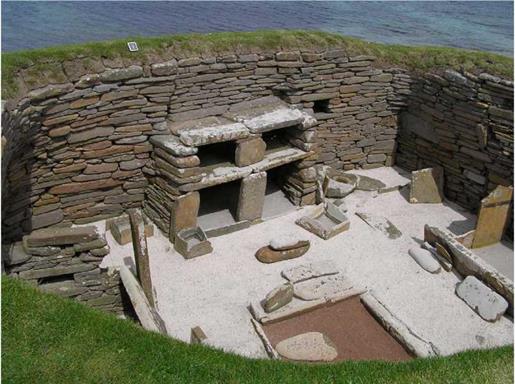History has remembered the kings and warriors, because they destroyed; art has remembered the people, because they created.1
William Morris
how Societies have Thought about designing, Making, and using furniture
The history of furniture design emerges from the history of kings and queens, established and emerging societies, furniture makers, furniture designers, architects, interior designers, industrial designers, artists, historians, entrepreneurs, and consumers. Throughout history, furniture has helped people sit, rest, work, play, organize their possessions, and partition space. Furniture includes all the conceivable variations of freestanding objects made to meet these functional needs as civilizations have developed.
Furniture design reveals the thinking about and the making of useful items, encompassing evolving technologies, materials, and available resources that shape and, in turn, are shaped by cultural, political, and economic factors. So the history of furniture design is really a chronology of how societies have designed, fabricated, and used an enormous anthology of furniture. If we seek to understand the challenges and conditions encountered in contemporary furniture design, we should look at the historical path that has shaped it thus far.
What was the first object used as furniture? Was it the ancient Egyptian coffin fabricated from wood and adorned with gesso, paint, jewels, enamel glass, and gold to preserve the body for the afterlife? Or was it a stone ledge in a cave that Cro-Magnon man slept on? Was it a tree stump used to rest? Was it a transportable or stationary element used
|
Figure 10.1 House interior at Skara Brae, c. 3500-2600 BCE. Note the stone seat and two-tiered stone cabinet attached to the layered and dry-stacked stone wall beyond. Photography copyright © Roger Butterfield. |
to organize possessions? Was it left natural or worked by hand tools? When did furniture makers become furniture designers? What distinctions exist between handcrafted pieces and mass-produced pieces? In what societies does furniture serve the middle class or the poor, not just the affluent? Was the primary purpose of the first formal sitting devices to rest or work, or was status and authority the primary purpose of these sitting devices? Reflecting upon these questions generates an understanding about the nature of furniture design and the paradigms that shape its written history.
Consider the prehistoric stone houses at Skara Brae (circa 3500-2600 BCE), located on Pomona, the largest of the Orkney Islands north of Scotland. A prehistoric civilization built structures here entirely out of stone. What remains today are the built-in seats and platform sleeping spaces. In a harsh climate, these ancient buildings provoke some questions: Was furniture an inherent part of the structure of these dwellings? Did freestanding furnishings even exist? Though there is evidence of furniture in societies that predate the stone houses at Skara Brae, the image of a stone dwelling with interior stone platforms and no freestanding objects (Figure 10.1) raises further questions: Can architecture alone accommodate the functional and utilitarian needs of daily life relying solely on platforms and built-in cabinetry? Do we need furniture? If furniture is inherently architectural, then what impact might mass production and industrialization have on architecture and interior design?
The notion of furniture’s developing from an architectural lineage is widely accepted— especially among architects. Architectural practitioners and theorists from the past, including Marcus Vitruvius Pollio (first century BCE), Leon Battista Alberti (1404-1472), and Alvar Aalto (1898-1976) have developed theoretical frameworks that address the subject of furniture
design. Their writings, along with their built work, have influenced generations of designers. The Finnish architect Alvar Aalto explained:
A lamp and chair are always part of an environment. It has usually been like this: When working on the construction of a public building, I noticed that such furnishings and appliances were necessary to create the right unity, and then I designed them. The fact that later on they can also fit into another environment is another story.2
Aalto designed Stool 60 in 1927 for the library he designed in Viipuri, Finland (see Chapter 4). Since then, over one million stools have been sold worldwide and are still in use today.
Furniture has deep architectural roots, reinforcing the concept of place and completing interior space, but it is also tethered to industrial production and craft. Driven by a combination of structural, utilitarian, and aesthetic concerns, furniture reveals a chronology of ideas beginning with the earliest societies that existed over 8,000 years ago.




